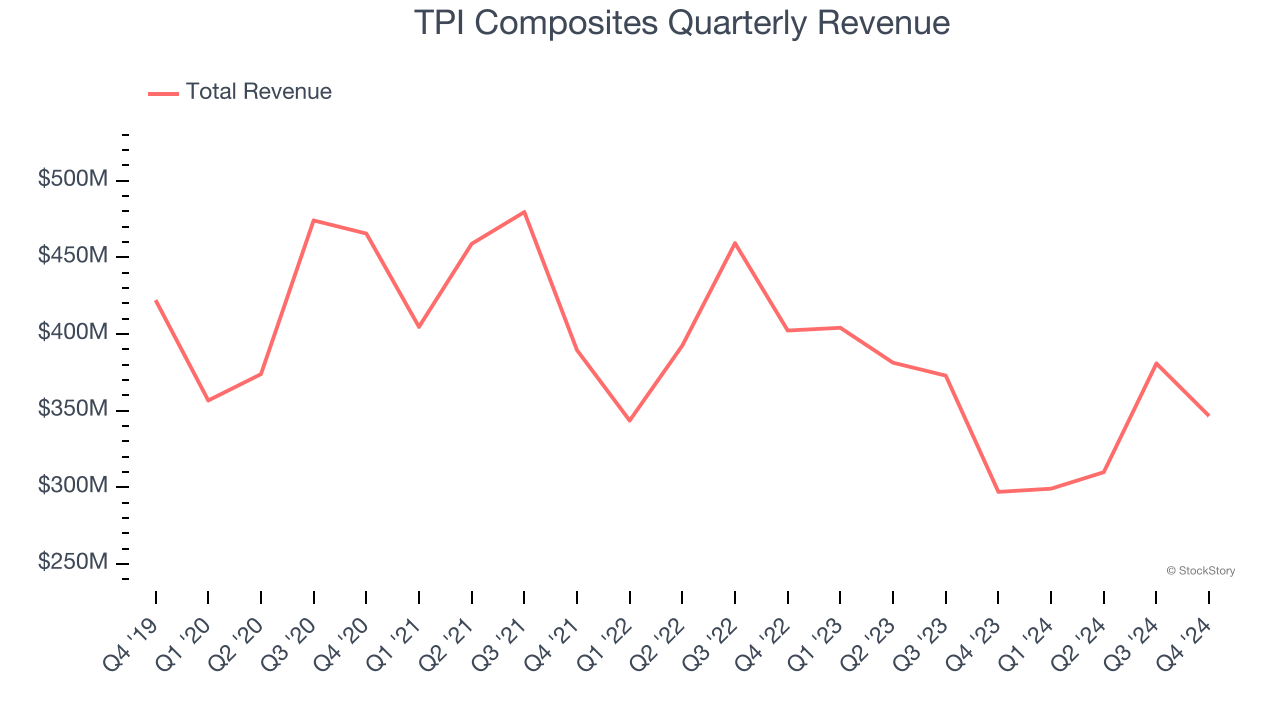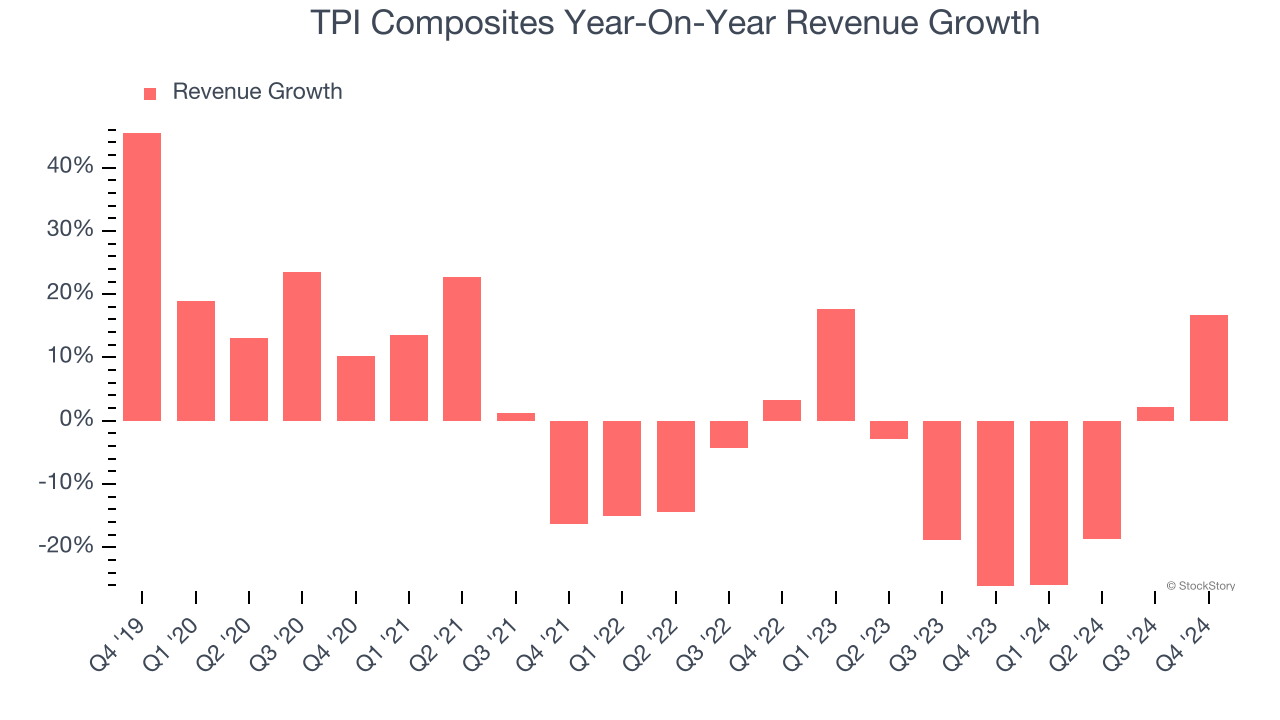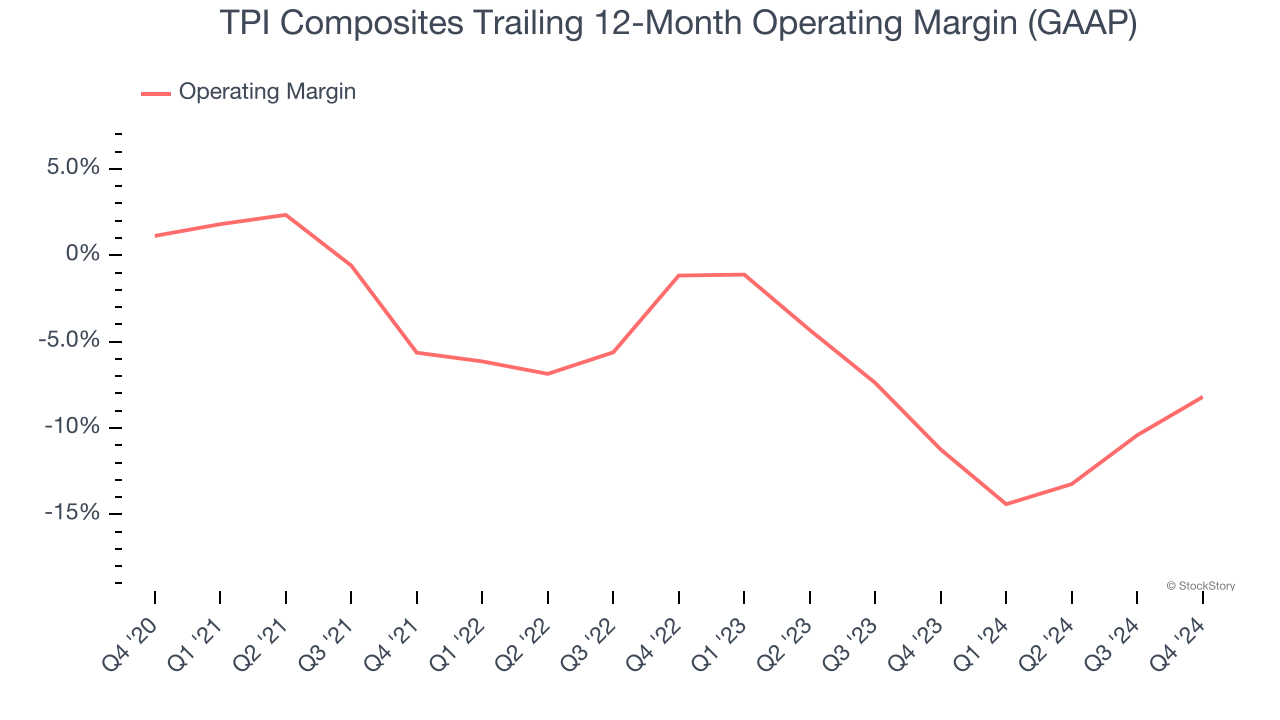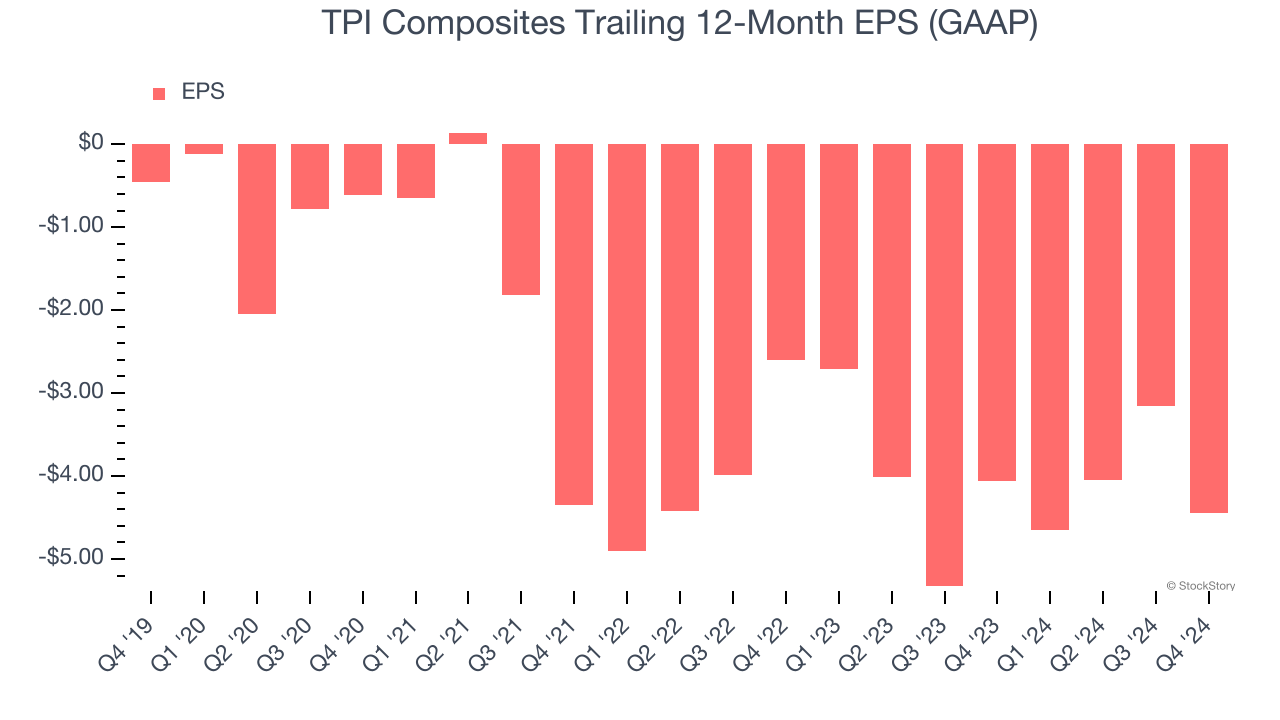
Global wind blade manufacturer TPI Composites (NASDAQ: TPIC) fell short of the market’s revenue expectations in Q4 CY2024, but sales rose 16.7% year on year to $346.5 million. The company’s full-year revenue guidance of $1.45 billion at the midpoint came in 8.6% below analysts’ estimates. Its GAAP loss of $1.03 per share was significantly below analysts’ consensus estimates.
Is now the time to buy TPI Composites? Find out by accessing our full research report, it’s free.
TPI Composites (TPIC) Q4 CY2024 Highlights:
- Revenue: $346.5 million vs analyst estimates of $364.8 million (16.7% year-on-year growth, 5% miss)
- EPS (GAAP): -$1.03 vs analyst estimates of -$0.21 (significant miss)
- Adjusted EBITDA: $1.25 million vs analyst estimates of $13.22 million (0.4% margin, 90.6% miss)
- Management’s revenue guidance for the upcoming financial year 2025 is $1.45 billion at the midpoint, missing analyst estimates by 8.6% and implying 8.5% growth (vs -6.5% in FY2024)
- Operating Margin: -6.4%, up from -15.7% in the same quarter last year
- Free Cash Flow was $83.22 million, up from -$15.36 million in the same quarter last year
- Market Capitalization: $67.54 million
“We delivered solid results in 2024 despite a challenging macroeconomic backdrop for the global wind industry. In 2024, we made the strategic decisions to transition lines to next-generation blades and restructure our portfolio by divesting the Automotive business, shutting down one of our Mexico facilities and rationalizing our workforce in Türkiye to reflect anticipated demand,” said Bill Siwek, President and CEO of TPI Composites.
Company Overview
Founded in 1968, TPI Composites (NASDAQ: TPIC) manufactures composite wind turbine blades and provides related precision molding and assembly systems.
Renewable Energy
Renewable energy companies are buoyed by the secular trend of green energy that is upending traditional power generation. Those who innovate and evolve with this dynamic market can win share while those who continue to rely on legacy technologies can see diminishing demand, which includes headwinds from increasing regulation against “dirty” energy. Additionally, these companies are at the whim of economic cycles, as interest rates can impact the willingness to invest in renewable energy projects.
Sales Growth
Reviewing a company’s long-term sales performance reveals insights into its quality. Any business can have short-term success, but a top-tier one grows for years. TPI Composites struggled to consistently generate demand over the last five years as its sales dropped at a 1.4% annual rate. This fell short of our benchmarks and is a sign of poor business quality.

We at StockStory place the most emphasis on long-term growth, but within industrials, a half-decade historical view may miss cycles, industry trends, or a company capitalizing on catalysts such as a new contract win or a successful product line. TPI Composites’s recent history shows its demand has stayed suppressed as its revenue has declined by 8.5% annually over the last two years. TPI Composites isn’t alone in its struggles as the Renewable Energy industry experienced a cyclical downturn, with many similar businesses observing lower sales at this time. 
This quarter, TPI Composites’s revenue grew by 16.7% year on year to $346.5 million but fell short of Wall Street’s estimates.
Looking ahead, sell-side analysts expect revenue to grow 17.4% over the next 12 months, an improvement versus the last two years. This projection is eye-popping and implies its newer products and services will catalyze better top-line performance.
Unless you’ve been living under a rock, it should be obvious by now that generative AI is going to have a huge impact on how large corporations do business. While Nvidia and AMD are trading close to all-time highs, we prefer a lesser-known (but still profitable) stock benefiting from the rise of AI. Click here to access our free report one of our favorites growth stories.
Operating Margin
Operating margin is an important measure of profitability as it shows the portion of revenue left after accounting for all core expenses – everything from the cost of goods sold to advertising and wages. It’s also useful for comparing profitability across companies with different levels of debt and tax rates because it excludes interest and taxes.
TPI Composites’s high expenses have contributed to an average operating margin of negative 4.8% over the last five years. Unprofitable industrials companies require extra attention because they could get caught swimming naked when the tide goes out. It’s hard to trust that the business can endure a full cycle.
Looking at the trend in its profitability, TPI Composites’s operating margin decreased by 9.3 percentage points over the last five years. The company’s performance was poor no matter how you look at it - it shows its expenses were rising and it couldn’t pass those costs onto its customers.

TPI Composites’s operating margin was negative 6.4% this quarter. The company's consistent lack of profits raise a flag.
Earnings Per Share
Revenue trends explain a company’s historical growth, but the long-term change in earnings per share (EPS) points to the profitability of that growth – for example, a company could inflate its sales through excessive spending on advertising and promotions.
TPI Composites’s earnings losses deepened over the last five years as its EPS dropped 58.1% annually. We tend to steer our readers away from companies with falling EPS, where diminishing earnings could imply changing secular trends and preferences. If the tide turns unexpectedly, TPI Composites’s low margin of safety could leave its stock price susceptible to large downswings.

Like with revenue, we analyze EPS over a more recent period because it can provide insight into an emerging theme or development for the business.
For TPI Composites, its two-year annual EPS declines of 30.8% show it’s still underperforming. These results were bad no matter how you slice the data.
In Q4, TPI Composites reported EPS at negative $1.03, down from $0.27 in the same quarter last year. This print missed analysts’ estimates. Over the next 12 months, Wall Street expects TPI Composites to improve its earnings losses. Analysts forecast its full-year EPS of negative $4.45 will advance to negative $1.00.
Key Takeaways from TPI Composites’s Q4 Results
We struggled to find many positives in these results as the company missed across all key metrics. Its full-year revenue guidance also fell short of Wall Street’s estimates. Overall, this was a weaker quarter. The stock remained flat at $1.45 immediately after reporting.
Big picture, is TPI Composites a buy here and now? When making that decision, it’s important to consider its valuation, business qualities, as well as what has happened in the latest quarter. We cover that in our actionable full research report which you can read here, it’s free.







